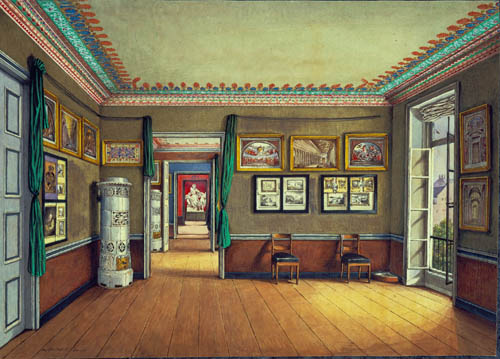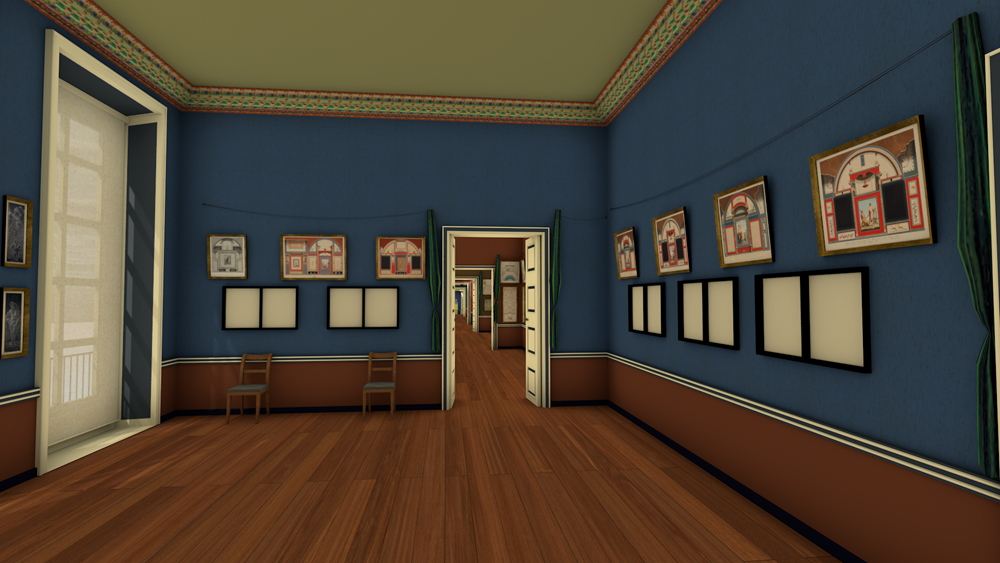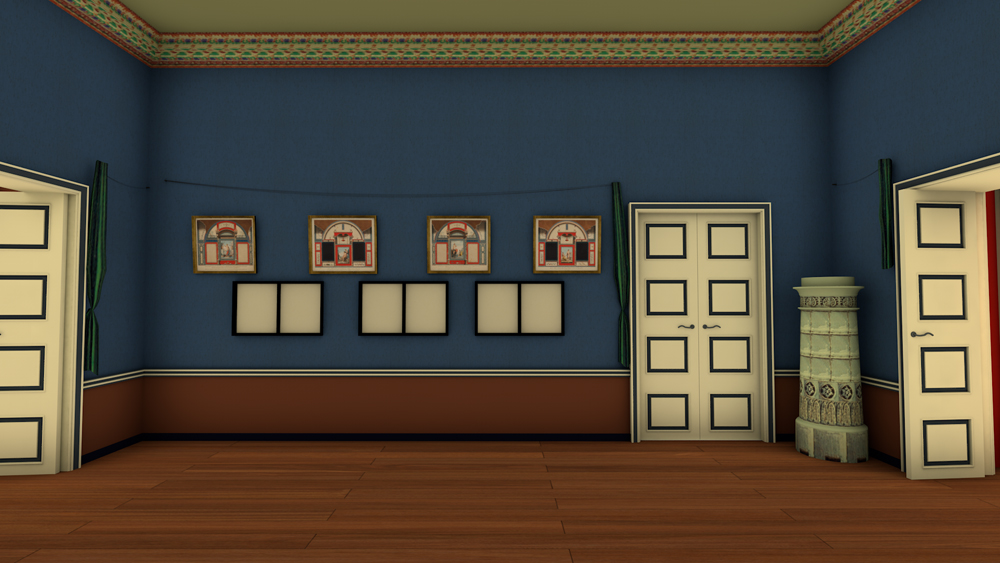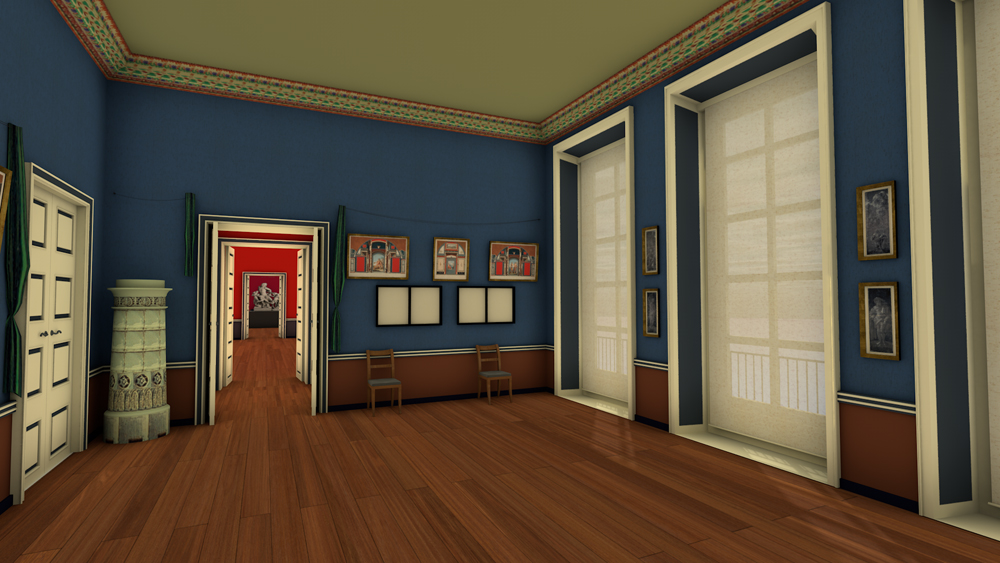1833 Reception room to the left
Antique
painting
The reception room to the left formed the prelude to the skylight rooms with antiquities. Presented against the backdrop of a blue wall were “representations of antique paintings”. Prints were exhibited in interchangeable frames.
On permanent display was a printed cycle of ten sheets after drawings by Anton Raphael Mengs and Anton von Maron, who had copied a number of mural paintings discovered after 1777 on the estate of the Roman Villa Negroni. Hung between the windows were four drawings by Albrecht Dürer. Already in the stairwell, the visitor had seen the busts of Dürer and Raphael, which paid tribute to them as counterpoles and “main representatives of newer art”. Here, Dürer’s drawings were given a prominence similar to the copies after Raphael’s frescos in the other central rooms.
The door on the western side led to the graphic collection. Here, visitors had the opportunity to view engravings, etchings or lithographs. The presentation was changed on a weekly basis – “Truly! A highly fortunate and praiseworthy arrangement that will not be deprived of thankful praise” (Kunst-Blatt 1834, p. 72).

Basis
for the reconstruction
The view inside the reception rooms reveals the possibilities and limitations of the virtual reconstruction. No hanging plans for these rooms exist. Additionally, the publications of around 1833 only summarily mention what was put on display here. Under the assumption that little had changed since the opening in 1833, the “Verzeichniss der öffentlich ausgestellten Kunst-Gegenstände” (“Directory of Publicly Exhibited Art Objects”) of 1844 was used as an additional source.
Based on our knowledge of the collection and the spatial conditions derived from the floor plan, it is possible to propose a plausible reconstruction of the presentation. Of course, the details remain rather speculative. The wall sections that were possible to compare to Mary Ellen Best’s representation of 1835 formed an important starting point. Yet, as faithful Best may have been regarding specific details, it is also clear that her watercolour painting conveys a different overall spatial impression. This is because she represented the rooms as much lower in height than they were in actuality.





